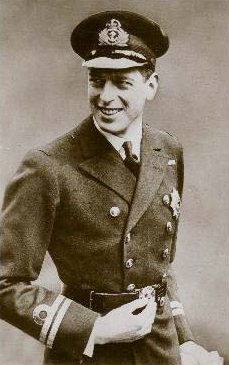© Unofficial Royalty 2024

Elisabeth of Bavaria, Empress of Austria; Credit – Wikipedia
December 24, 1167 – Birth of King John of England at Beaumont Palace in Oxford, England
John was the youngest of the eight children of King Henry II of England and Eleanor, Duchess of Aquitaine in her own right. In 1199, John succeeded his childless brother King Richard I as King of England. During his reign, John lost the French territories of Normandy, Maine, Touraine, Anjou, and Poitou, all ancestral territories of his Norman or Angevin ancestors. While John was trying to save his French territories, his discontented English barons led by Stephen Langton, Archbishop of Canterbury, were protesting John’s continued misgovernment of England. The result of this discontent was the best-known event of John’s reign, the Magna Carta, the “great charter” of English liberties. Among the liberties were the protection of church rights, protection for the barons from illegal imprisonment, access to swift justice, and limitations on feudal payments to the Crown.
Unofficial Royalty: King John of England
December 24, 1597 – Birth of Honoré II, Prince of Monaco in Monaco
When Honoré II was two years old, his mother died due to childbirth complications. In 1604, his father Hercule, Lord of Monaco was stabbed to death while walking through the streets of Monaco at night. A month short of his seventh birthday, Honoré succeeded his father as Lord of Monaco. In 1612, Honoré II started using the title of Prince, becoming the first Prince of Monaco. Honoré II became a vassal of King Louis XIII of France in 1633. Many Princes of Monaco were vassals of the Kings of France while remaining sovereign princes of Monaco. The Princes of Monaco and their families spent most of their lives in France and intermarried with French and Italian noble families. In 1616, Honoré married Ippolita Trivulzio, the daughter of the Italian nobles. Honoré and Ippolita had one son who died before his father. During his reign, Honoré II did much to extend, rebuild, and transform what was originally the 1191 fortress of his Grimaldi ancestors into what is today’s Prince’s Palace of Monaco. After a reign of fifty-eight years, Honoré II, Prince of Monaco died in Monaco on January 10, 1662, at the age of 64.
Unofficial Royalty: Prince Honoré II of Monaco
December 24, 1634 – Birth of Mariana of Austria, Queen of Spain, second wife of her maternal uncle King Philip IV of Spain, in Wiener Neustadt, Austria
Mariana was the daughter of Ferdinand III, Holy Roman Emperor, King of Hungary and Croatia, King of Bohemia, Archduke of Austria and his first wife Maria Anna of Spain. She was betrothed to Balthasar Carlos, Prince of Asturias, the son and heir of King Felipe IV of Spain, Mariana’s uncle, the brother of her mother. However, Balthasar Carlos died three months after the betrothal from smallpox, leaving his father with no male heir. 44-year-old King Felipe IV arranged to marry his son’s former fiancée, his 14-year-old niece Mariana. Mariana and Felipe IV had five children but only two survived childhood, including Felipe IV’s heir, the physically and mentally disabled King Carlos II of Spain. While a person in the fifth generation normally has thirty-two different ancestors, Carlos II had only ten different ancestors in the fifth generation. After the death of her husband, Mariana served as Regent for her four-year-old son, and remained an influential figure during his reign, until her death.
Unofficial Royalty: Mariana of Austria, Queen of Spain
December 24, 1660 – Death of Mary, Princess Royal, Princess of Orange, daughter of King Charles I of England, wife of Willem II, Prince of Orange, mother of King William III of England, at Whitehall Palace in London, England; buried at Westminster Abbey in London, England
Mary was created the first Princess Royal. Her mother Queen Henrietta Maria, daughter of King Henri IV of France, wanted to imitate the way the eldest daughter of the King of France was styled Madame Royale. In 1641, Mary married the future Willem II, Prince of Orange. Mary and Willem had one child, Willem III, Prince of Orange, later King William III of England. Mary died from smallpox at the age of 29. Her son Willem III, Prince of Orange, the future King William III of England, was just ten years old and had lost both parents to smallpox. William’s wife and co-ruler Queen Mary II would also die of smallpox at the age of 32.
Unofficial Royalty: Mary, Princess Royal, Princess of Orange
December 24, 1803 – Death of Georg I, Duke of Saxe-Meiningen in Meiningen, Duchy of Saxe-Meiningen, now in Thuringia, Germany; buried in the Ducal Crypt Chapel in the Meiningen municipal cemetery until 1977 when his remains were removed from the chapel, cremated, and buried elsewhere in the cemetery.
Georg became Duke of Saxe-Meiningen in July 1782, upon the death of his childless brother Karl Wilhelm. Four months later, he married Princess Luise Eleonore of Hohenlohe-Langenburg. The couple had three children including Adelaide of Saxe-Meiningen who married King William IV of the United Kingdom. One of the first things Georg did upon becoming Duke was to open the Ducal library and art collections to the public. He also oversaw the design of the new English Garden in Meiningen on the site of the former municipal cemetery and began to transform Meiningen into a prestigious royal city. Having always been in poor health, Georg I died at the age of 42, after developing a fever.
Unofficial Royalty: Georg I, Duke of Saxe-Meiningen
December 24, 1837 – Birth of Elisabeth of Bavaria, Empress of Austria, wife of Emperor Franz Joseph I of Austria, at the Herzog-Max-Palais (Duke Max Palace) in Munich, Kingdom of Bavaria, now in Bavaria, Germany
Full name: Elisabeth Amalie Eugenie
In 1854, Sisi, as she was known, married Emperor Franz Joseph I of Austria. The couple had four children including their only son Crown Prince Rudolf who died in a suicide pact with his mistress. The marriage was not a happy one for Sisi. Although her husband loved her, Sisi had difficulties adjusting to the Austrian court and did not get along with Imperial family members, especially her mother-in-law. Sisi felt emotionally distant from her husband and fled from him and her duties at court by frequent traveling. On September 10, 1898, while walking to a ferry landing on Lake Geneva in Geneva, Switzerland with her lady-in-waiting, Sisi was stabbed to death by twenty-five-year-old Luigi Lucheni.
Unofficial Royalty: Elisabeth of Bavaria, Empress of Austria
December 24, 1845 – Birth of King George I of Greece, born Prince Vilhelm of Denmark, at the Yellow Palace in Copenhagen, Denmark
Full name: Christian Vilhelm Ferdinand Adolf Georg
George was the son of King Christian IX of Denmark and the brother of King Frederik VIII of Denmark, Queen Alexandra of the United Kingdom, and Empress Maria Feodorovna of Russia. In 1863, he was unanimously elected King by the Greek National Assembly. In 1867, George married Grand Duchess Olga Konstantinovna of Russia. They had eight children including Prince Andreas of Greece, the father of Prince Philip, Duke of Edinburgh. George quickly learned Greek and was often seen informally strolling through the streets of Athens. His reign of nearly 50 years was characterized by territorial gains as Greece established its place in pre-World War I Europe. In 1913, while walking in Thessaloniki, Greece, George was killed when an assassin shot him at close range in the back.
Unofficial Royalty: King George I of Greece
December 24, 1879 – Birth of Alexandrine of Mecklenburg-Schwerin, Queen of Denmark, wife of King Christian X of Denmark, in Schwerin, Grand Duchy of Mecklenburg-Schwerin, now in Mecklenburg-Vorpommern, Germany
Full name: Alexandrine Auguste
Alexandrine was the eldest of the three children of Friedrich Franz III, Grand Duke of Mecklenburg-Schwerin and Grand Duchess Anastasia Mikhailovna of Russia. In 1898, she married the future King Christian X of Denmark. The couple had two sons including King Frederik IX of Denmark. Christian and Alexandrine were devoted to one another and enjoyed a happy marriage. The couple became king and queen of Denmark in 1912. While their popularity waxed and waned throughout Christian’s rule, he and Alexandrine are generally viewed as successful as king and queen.
Unofficial Royalty: Alexandrine of Mecklenburg-Schwerin, Queen of Denmark
December 24, 1900 – Death of Jane Spencer, Baroness Churchill, Lady of the Bedchamber to Queen Victoria, the longest-serving member of Queen Victoria’s household, in her room at Osborne House, after over 45 years of service, companionship, and friendship to Queen Victoria. She was buried several days later in Finstock, Oxfordshire, England
Born Lady Jane Conyngham in 1826, she was the eldest daughter of Francis Conyngham, 2nd Marquess Conyngham. She married Francis Spencer, 2nd Baron Churchill. Widowed in 1886, Jane remained at Queen Victoria’s side for the rest of her life. On Christmas Eve 1900, Jane died in her sleep in her room at Osborne House. She was buried several days later in Finstock, Oxfordshire, England. Queen Victoria was not told of her death immediately, as her doctors felt the news would be devastating to her already weakened health. Once told, she was heartbroken, and sent a wreath for Jane’s funeral with a handwritten note – “A mark of most loving affection and grateful remembrance from her devoted friend, Victoria, R.I.” Less than a month later, Queen Victoria also passed away at Osborne House.
Unofficial Royalty: Jane Spencer, Baroness Churchill
This article is the intellectual property of Unofficial Royalty and is NOT TO BE COPIED, EDITED, OR POSTED IN ANY FORM ON ANOTHER WEBSITE under any circumstances. It is permissible to use a link that directs to Unofficial Royalty.








